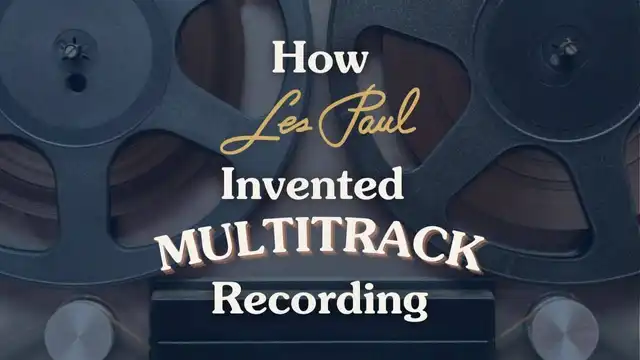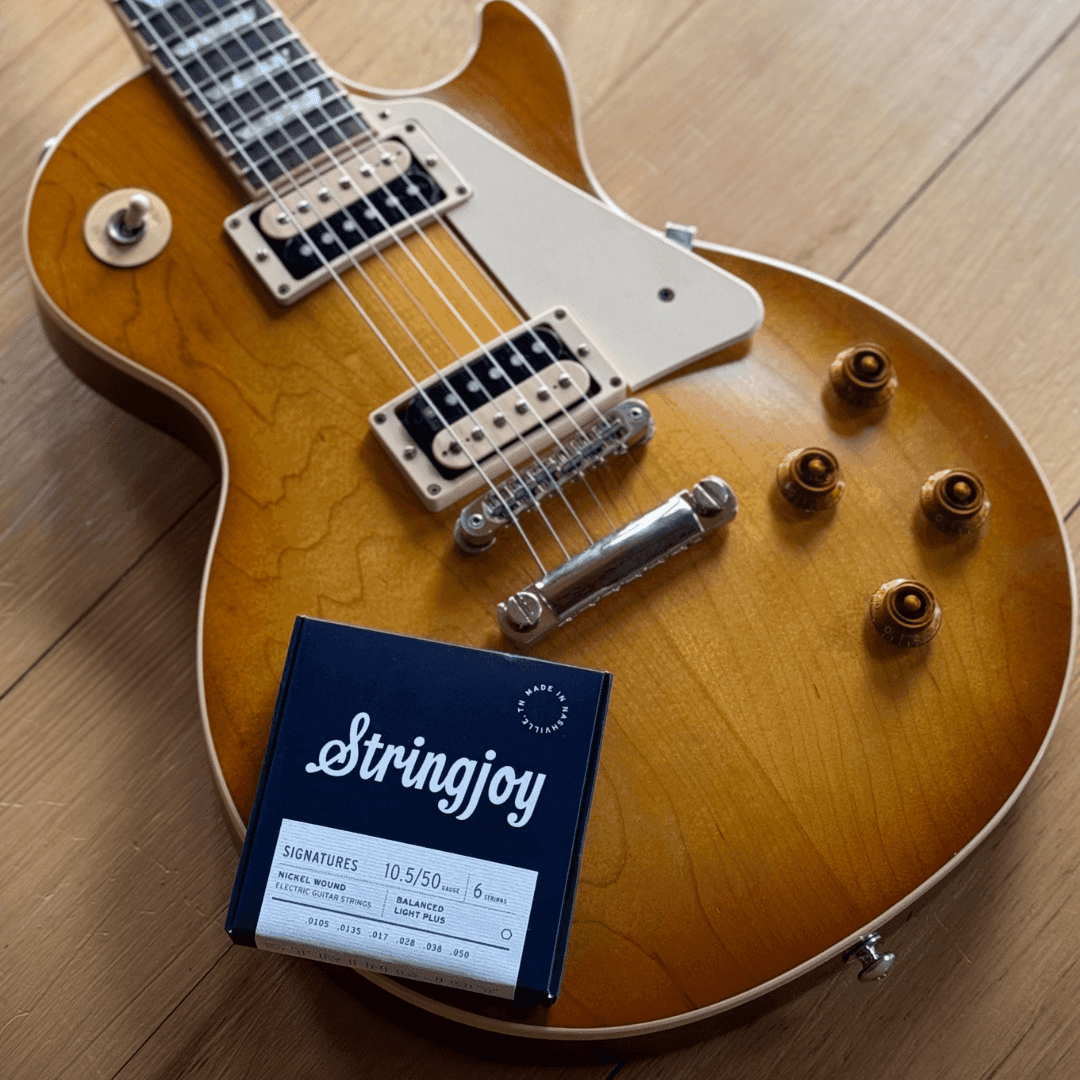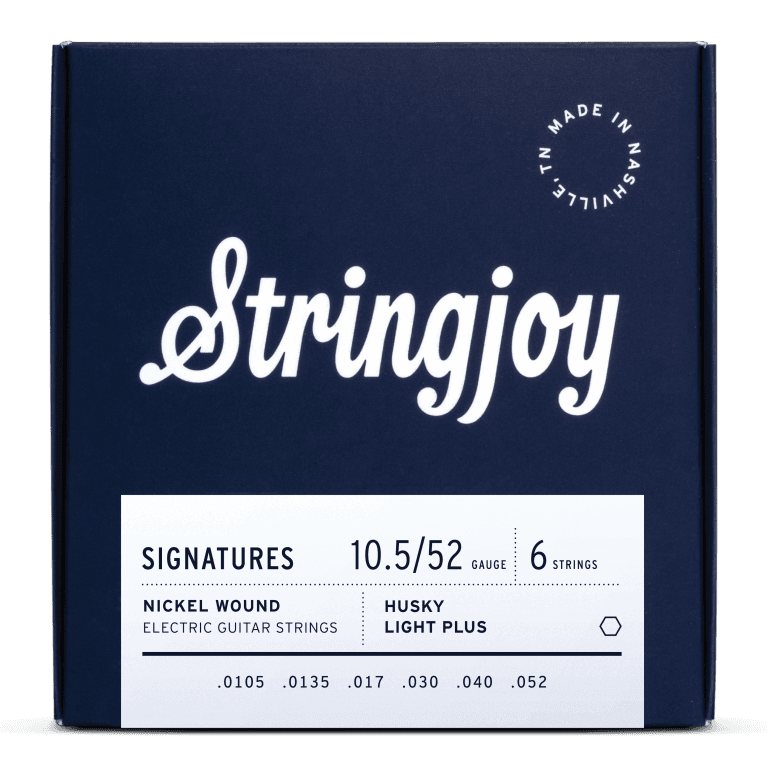How Les Paul Invented Multitrack Recording


Today Les Paul is most commonly associated with the Gibson Les Paul. Undoubtedly, lots of people don’t know that before there was a Les Paul guitar, there was a Les Paul the guitarist. Fewer still know that having his name on the headstock of a legendary guitar is far from Les Paul’s biggest accomplishment. If Les Paul had never even picked up a guitar he'd still be a legend. Because Les Paul invented multitrack recording.
Multitrack recording is a technique so ubiquitous that it’s hard to imagine popular music without it. It can be heard in some form on nearly every recording of the last sixty years, from pop and jazz to metal and country. Les Paul invented multitrack recording, revolutionized music production, and changed the way we go about making music.
So, let’s acquaint ourselves with the story of Les Paul’s most essential contribution, trace his career as an inventor, and fully appreciate the significance of Les Paul and the invention of multitrack recording.

Before Multitrack Recording: One Live Take
To fully appreciate the impact of Les Paul’s innovations, it’s important to understand what recording was like before the advent of multitracking. Imagine a recording session where you had to nail one single live take. No overdubs, no “fixing it in post’”, no adding, no subtracting. One. Live. Take. Before multitrack, a recording was essentially a snapshot of a single musical moment in time. Kind of a cool concept, but not necessarily fun for musicians, producers, or, most importantly, listeners.
Consider a four piece band recording a song. The band must play through the entire song together, in time, from top to bottom. If everything is perfect but the bassist flubs one note (always blaming the bassist…), the band must either accept that this mistake will live forever on the recording, or they must start over from the top and hope for better results.
This tedious process is a modern musician’s nightmare, but it was a stone cold reality for recording artists for the first half of the twentieth century.
That isn’t to say that some players - including Les Paul - appreciated the pressure cooker that was single-take recording, believing that the necessity of perfection inspired a higher level of performance and musicianship. There are modern artists who tap into this philosophy and do their best to record live in studio and limit overdubs and punch-ins that would otherwise fill in their sessions.
But, for most, single-take recording was a severe creative limitation. What if a singer wanted to harmonize with herself? What if a guitarist wanted to play lead and rhythm parts? What if you simply couldn’t find a band to back you up? Les Paul appreciated the challenge of live takes, but the constraints they put on his musical imagination were not something he was willing to put up with if he could help it.

Sound on Sound: The Disc Method
Before reel to reel tape machines, recording was processed using acetate discs. In simple terms, sound recordings were “carved” into an aluminum or glass disc embedded in a layer of vinyl-like nitrocellulose.
This was the primary method used for recording music, radio shows, and all other forms of recorded media in the beginning of the 20th century. Its novelty was huge, with recording booths popping up at fairs and carnivals and allowing people of the day to experience this incredible technology. (For an example of how these work, check out this video featuring Jack White’s recording booth.)
A lifelong tinkerer who was fascinated by recording technology, in the mid 1930s Les Paul built his own acetate cutting machine. It was with this machine that he began to develop the nascent recording techniques that would soon become standard practice.
As Paul details in his autobiography, the concept of sound on sound recording arose from the practical need to record a song when his bandmates were unavailable:
One particular day, rehearsal was over, and I thought, and “Oh geez. I wanted to do Limehouse blues but Jimmy Atkins, and Ernie Newton are gone. Oh well, I’ll just put the rhythm down and play along with it.
And as I started to do that the idea struck me, “why don’t I just record two of these things out and play Ernie’s part and then play Jim’s part and then play my part?“
So on the first pass, I recorded the rhythm guitar, and then, on the next set… I lay down the baseline using the low strings on my rhythm guitar. … That was the toughest thing in the world to do—to take two pick up arms and put them down at the same time and start them off together.
But I kept at it, and in a few days I had the thing so I could play back a rhythm section in sync and play my part over it… That was my first attempt at trying to do multitracking with the guitar. It was very crude, but I proved a point and it lit the light.
This was how, in his own home studio, Les Paul produced some of the very first sound on sound recordings - audio recordings layered on previously recorded audio - ever.
Strings for Your Les Paul
Some of Our Favorite Picks for LP-Style Guitars

Stringjoy 10-48 Balanced Light Gauge Signatures - Nickel Wound Electric Guitar Strings

Stringjoy 11-48 Classic Medium Gauge Broadways - Pure Nickel Electric Guitar Strings

Stringjoy 9.5-46 Balanced Super Light Plus Gauge Orbiters - Coated Nickel Electric Guitar Strings

Stringjoy 10.5-52 Husky Light Plus Gauge Signatures - Nickel Wound Electric Guitar Strings

Stringjoy 10-46 Classic Light Gauge Broadways - Pure Nickel Electric Guitar Strings
From here, Paul immediately began utilizing these techniques in musical expression. Two early songs that featured multitracking were the ethereal “Lover” and “Brazil,” released in 1948.
These recordings display Paul’s ingenuity, featuring bass, rhythm guitar, lead guitar, percussion, and additional guitar parts performed all by himself. Paul even discovered that he could perform a take at half speed and then speed up the recording, making the tracks an octave higher when played at proper speed.
He also used this method to overdub or his then-wife Mary Ford’s vocal harmonies, perhaps most famously featured in 1951’s “How High the Moon.”
These achievements were remarkable but presented their own challenges. Using a single disc to record numerous overdubs meant that, if a take went awry on the 11th or 12th layer, the entire track was wasted. Tedious issues like this inspired Paul to continue to innovate and improve.

Multitrack Recording with Tape
While recuperating from a car accident in 1949, Les Paul was given an Ampex Model 200A from his friend and collaborator, Bing Crosby. The 200A was the first commercially available tape machine, and Paul immediately devised a revolutionary improvement for it — adding a second tape head.
A second tape head would allow for playback of a base recording while the new track was recorded simultaneously. This simplified the multitracking process and removed the requirement of nailing the timing on acetate discs. Further, Paul implemented a second tape recorder to bounce tracks back and forth, allowing him to preserve the “master” (then a new term) in case there was a bad take on the new track.
In 1953, Paul reached the peak of his innovation and combined all the discrepant elements of his technique into one device - the multitrack tape recorder. By stacking eight carefully aligned tape heads on top of each other, multiple tracks could be recorded, isolated, allowing for expanded multitrack options like the ability to re-record any particular track in the event of a mistake. It also allowed individual members of a band to be recorded separately, opening up exponential new possibilities in the art of recording.
Les’ Impact
It can’t be overstated how much multitrack tape machines changed the nature of recording music. It created a whole new world of possibilities that have become regular studio staples.
With multitrack, engineers could individually adjust the volume and EQ of individual tracks. Was the singer too quiet? Make them louder. Is the bass lacking? Boost the low frequencies. These basic tenets of recording were impossible prior to Les Paul. Nearly every recording since the advent of multitrack recording uses techniques that were pioneered by Les Paul, and his invention is what brought them to life. Today, digital recording technology has almost entirely supplanted tape - however, emulation of Paul’s core concepts of analog recording provided the basis by which digital recording was developed.
Les Paul: More Than a Guitar
While he’s synonymous with a guitar and can rightfully be claimed by the guitar community, Les Paul’s impact on modern recording is a gift to every musician and every music enthusiast. Through years of hard work and experimentation, Les Paul invented sound on sound recording and the multitrack tape machine, completely revolutionizing music-making in the process. It’s a story less told, but Les Paul didn’t just stamp his name on a guitar - he stamped it on music history.

Other Posts you may like

Guitar Strings Order: How the Guitar is Tuned and Why

Two Handed Tapping: Our Top 8 Tappers of All Time

Which Guitar Strings Wear Your Fret Wire Down More?

What is Nashville Tuning? Its History, Best Guitar Strings & Uses

Guitar Scale Length Explained: String Tension & Playability

What Guitar Strings I Used To Play...
0 Responses
Leave a Reply
Your email address will not be published. Required fields are marked *

